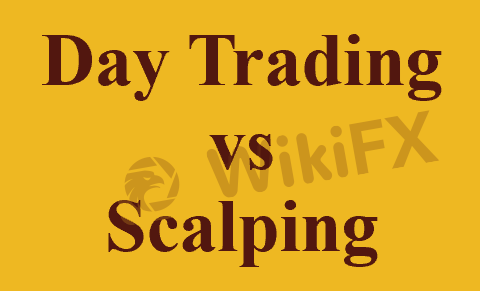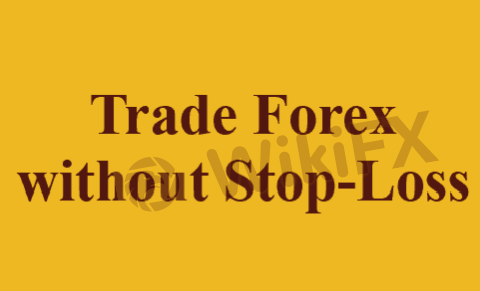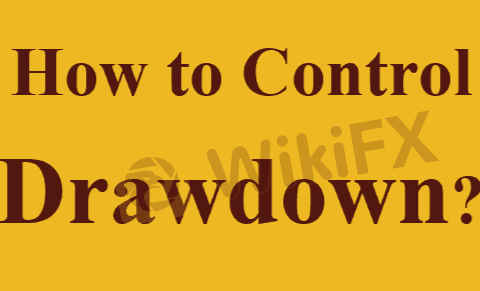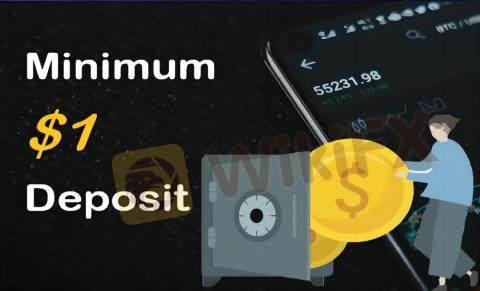Welcome to the Encyclopedia Channel of WikiFX, a professional knowledge-sharing platform. Today, lets discuss some essential points concerning forex hedging: what is forex hedging? when to use forex hedging and what are forex hedging strategies. Like always, we hope you can gain some new insights from this article that help you become a professional and successful forex trader.

What is Forex Hedging?
Opening a position on one currency pair to offset exposure to another is known as “hedging” in the foreign exchange market. Assuming the positions are of equal size and the price movements are inversely correlated, the price changes in these positions can cancel each other out while both are open.
A forex hedge can be opened easily. In this strategy, you enter the market with an already-open position (usually a long one) and make a trade in anticipation of an expected price movement. When you open a transaction in the opposite direction of the projected movement of the currency pair, you can protect your original investment from losses should the market move against you.
Consider this example:
Lets say trading two pairs: EUR/USD, GBP/USD. You can limit your risk in USD by going long on the GBP/USD and short on the EUR/USD. Your long position would suffer losses, while your short position would generate a profit if the dollar rose in value relative to the euro. However, if the dollar were to fall in value relative to the euro, your hedging approach would reduce the exposure to the short position.
Why Hedging Forex Positions Matters?
Forex traders may choose to hedge forex as a means of protection against exchange rate swings given the inherent volatility of the forex market. While there is no foolproof method of eliminating every danger. Forex hedging is a tool that can be used to lessen the blow of a loss or keep it within a predetermined range.

Some Advantages and Disadvantage of Forex Hedging Revealed


It can help to diversify your portfolios.
A diversified portfolio reduces overall volatility, and hedging is a strategy that involves spreading out your open holdings to limit exposure to any one factor.
It can be used to respond to market changes.
Your account balance may be stabilized while other positions grow in value thanks to the profit you get from hedging in the event of volatility or abrupt price movements.
It can help to check odds of success relative to investment.
A hedge is a great way to offset the risk of your other investments and even profit from price increases when your other holdings are losing money.
It can be universally used.
Forex hedging can be used in any market, with any trading instrument, and by traders of any skill level because of the breadth of options available. It's utilized by people trading on their own, by huge investment funds all around the world, and it can even be a part of a country's economic policy.

It can reduce your potential profits.
A hedge may help you sleep better at night, but it will eat into your profits. This is because the value of your hedged position is likely to drop if profits continue to climb for your initial open holdings.

It requires trading experience.
For this reason, only seasoned traders with a firm grasp of market timing and volatility should consider using FX hedging. If you don't know what you're doing and you start messing around with hedging, you might easily wipe out your trading account.
It can cause sudden loss.
It is not always the case that a hedge will increase in value as the value of your other investments decreases; this is especially true for sophisticated hedges that are not immediately tied to your other positions. This is due to the fact that the variables and events producing these price swings cannot be forecast, and hence the impact volatility has on your hedged position cannot be known with certainty. If this happens, you may end up losing even more money than you would have if you hadn't hedged.
It can bring extra costs.
Additional expenses are common when hedging. In order to reduce potential losses, opening a position requires payment of commission fees. Trading foreign currency can include additional expenses due to the spread and swap fees. When developing trading systems predicated on Forex hedging strategies, novice traders often overlook these fees.

When to Use Hedge Strategies in Forex Trading?
Hedging is a tool that day traders can employ to safeguard their daily profits from the ebb and flow of the market. When a currency pair is overbought or oversold, the price can drop at any time.

Hedging enables you to open short bets to balance losses after you've opened a long position in an overbought scenario. On the other hand, if you have a short position open in an oversold market, you can hedge your bets by opening a long position.
Hedging is used by both short-term traders and long-term investors to safeguard their portfolios from sudden price spikes and price drops. Putting in a long position (if your initial position was short) or a short position (if your original position was long) and leaving it alone for a few years is one way to keep a hedge in place for a year or more.
It's important to remember that the benefits of a hedged position won't kick in for another year, so you shouldn't let short-term price fluctuations influence your trading selections.
How to Hedge A Forex Trade?
Make sure you have a forex account to trade currencies and reduce the risk involved.
To determine which currency pair to trade, one must first become familiar with the various currencies, their charts, and the economic situations of each.
To limit your exposure to risk and safeguard your gains, you must develop a suitable forex hedging plan.
Use one of the four FX hedging strategies outlined in this section, develop your own, and stay abreast of global events and announcements to maximize your forex trading profits.
Set your stop-loss and take-profit levels, and enter a trade in the currency pair of your choice.
In order to rest easy knowing that your trade positions are profitable, you need employ additional risk management forex hedging tactics such as stop-loss in addition to hedging strategies.
Some Relevant Forex Hedging Strategies to Share
FX options are a type of derivatives that provide the trader with the right, but not the duty, to purchase or sell a currency pair at a set price by a future date. Given that they might expire at any time,
Some Relevant Forex Hedging Strategies to Share

Hedging Forex with Options
FX options are a type of derivatives that provide the trader with the right, but not the duty, to purchase or sell a currency pair at a set price by a future date. Given that they might expire at any time, Forex options are mostly employed as a short-term hedging tool. The cost of options is determined by the market value of currency pairs, specifically the base currency.
Suppose a trader wishes to make a 'call option' and purchase a quantity of EUR/USD, but believes that the currency pair's price may fall. In order to profit from the price decline, he can then purchase a “put option” and simultaneously short-sell an equal amount of foreign currency. Thus, the trader hedges any currency risk associated with the dropping position, and he is more likely to be protected against losses. Learn short selling currencies
Hedging Forward Currency Contracts
A forward contract is yet another type of financial derivative. Forward trading is an agreement between a buyer and a seller to exchange currency at a future period, much to FX options. The buyer is bound to actually buy this asset, unlike with a call option, and the terms can be modified in a variety of ways. Forward currency contracts provide for cash or delivery settlement at any time throughout the agreement, as well as the flexibility to modify the contract's future expiration date, underlying currency pair, and monetary value. In the context of currency hedging, this form of trading derivatives is preferred by certain investors since it involves slightly less risk.
Currency futures are exchanged on an exchange, but the hedging procedure is otherwise nearly comparable to that of forwards.
Forex Correlation Hedging Strategy
Numerous correlations exist between forex pairings on the forex market, as is common knowledge. Pairs trading is a sophisticated forex hedging method involving the opening of one long position and one short position in two distinct currency pairs. As long as there is a positive connection between them, this second currency pair may likewise be exchanged for a financial asset, such as gold or oil.
Forex hedgers can employ pairs trading for both short- and long-term strategies. As it is a market-neutral strategy, swings in the market have no influence on your overall positions; rather, it balances positions that operate as a hedge against one another. In markets as volatile as currency trading, forex correlation hedging tactics are especially effective. Due to the abundance of positively correlated financial assets, pair trading can also help to diversify your trading portfolio.
Cross currency swap hedge
A cross currency swap is a form of interest-rate derivative. The agreement between two counterparties (typically foreign firms or investors) to exchange principle and interest payments in separate currencies. In contrast to forwards and futures, they are not traded on a central exchange, therefore they can be customized at any time and rarely have variable interest rates. These variable rates fluctuate based on the fluctuations of the foreign exchange market.
A cross currency swap is used to hedge against the risk of rising interest rates. The parties may agree at the outset of the contract to impose a fixed interest rate on the notional amount in order to avoid incurring losses due to market declines. Cross currency swaps are distinguished from derivative products by the consideration of interest rates, while FX options and forward currency contracts do not shield investors from interest rate risk. Instead, they concentrate more on hedging foreign exchange risk.
Cross currency swap hedges are especially effective for multinational firms and institutional investors exchanging substantial amounts of foreign currency.
Conclusion
In conclusion, if you use hedging in your FX trade, your primary goal will be to reduce your potential earnings. If you're diligent, hedging can become an integral component of your trading strategy. The forex hedging tactics might prove useful. However, familiarity with the FX market, selection of your currency pair, and assessment of your available money are all prerequisites to beginning forex hedging.
WikiFX is a professional, global forex broker regulatory inquiry platform with extensive and easily accessible data on Forex Brokers, the Forex Industry News, Educational Resources and more. For more forex-related information and resources, please visit the WikiFX website or download WikiFX App now.
You Also Like

Forex Day Trading VS Forex Scalping: Which One to Choose?
Unravel the clash of Forex day trading and scalping - grasp their tactics, track differences, and tailor your trade.

How to Hedge Forex Positions? Some Relevant Strategies to Share.
Dive into Forex hedging strategies - reducing risk, seizing opportunities and securing robust trading profits.

Can I Trade Forex without Stop-Loss? Here Lets’ Discuss
Start Forex trading without stop-loss - understand how it works, explore other options and possible risks.

Forex Market Hours: What is the Best Time to Trade Forex?
Master the clock of Forex trading - optimize profits by knowing the best trading times globally!



























